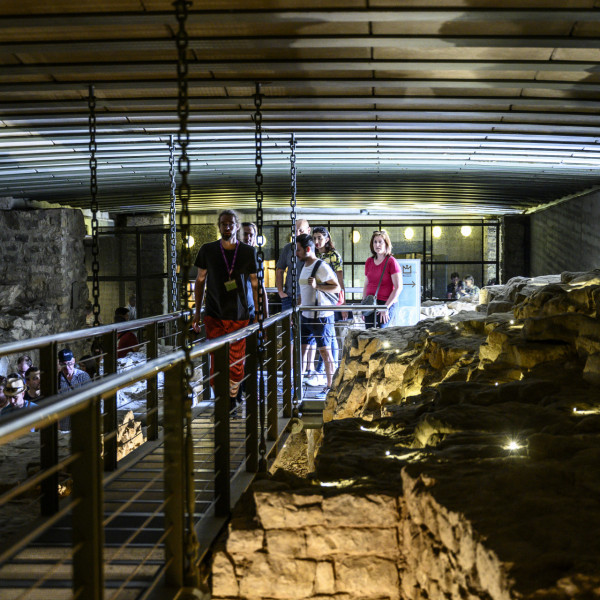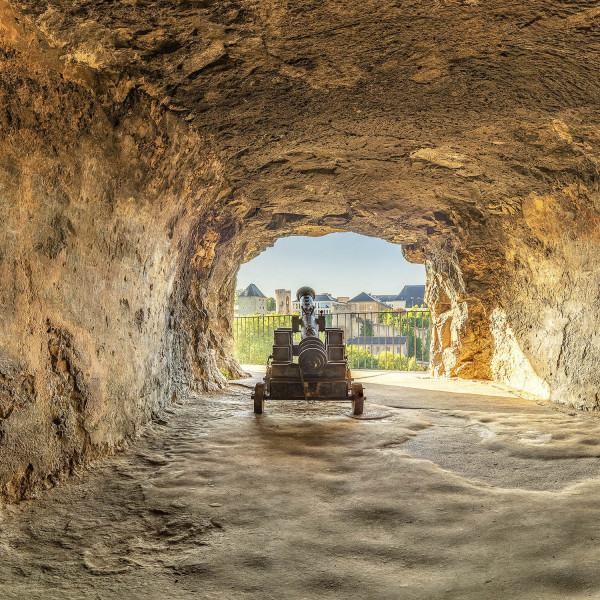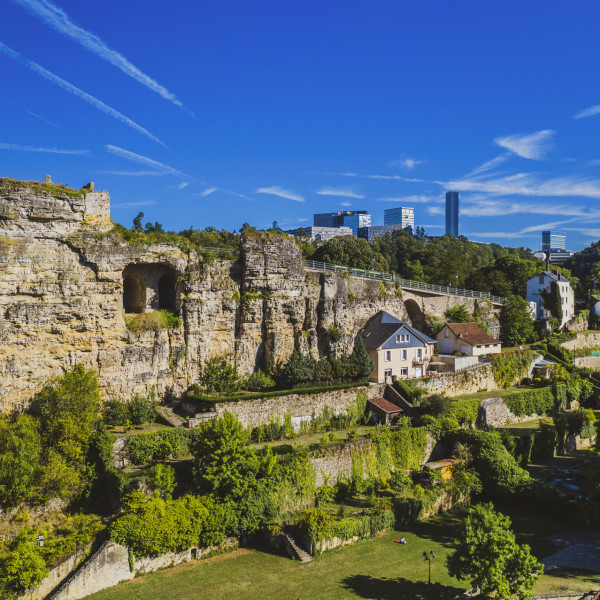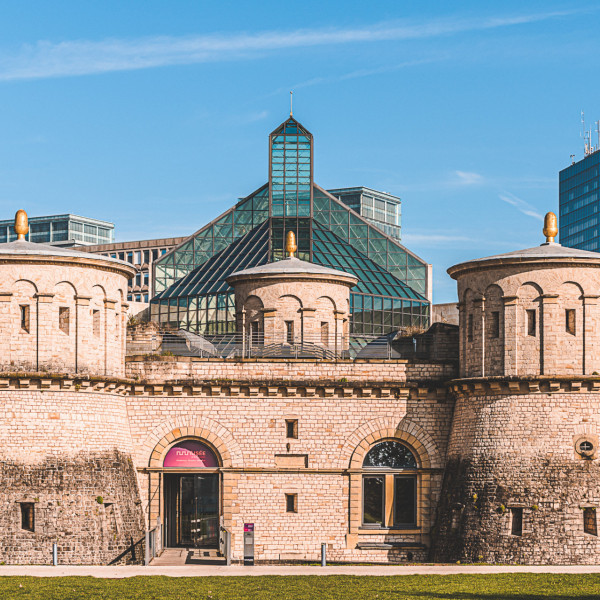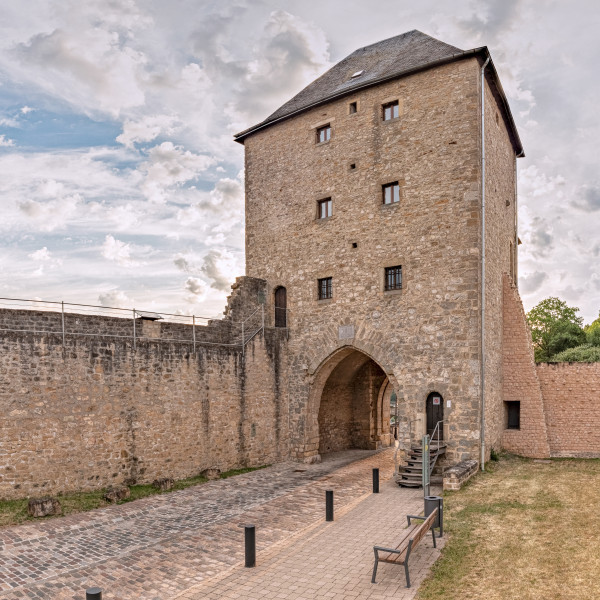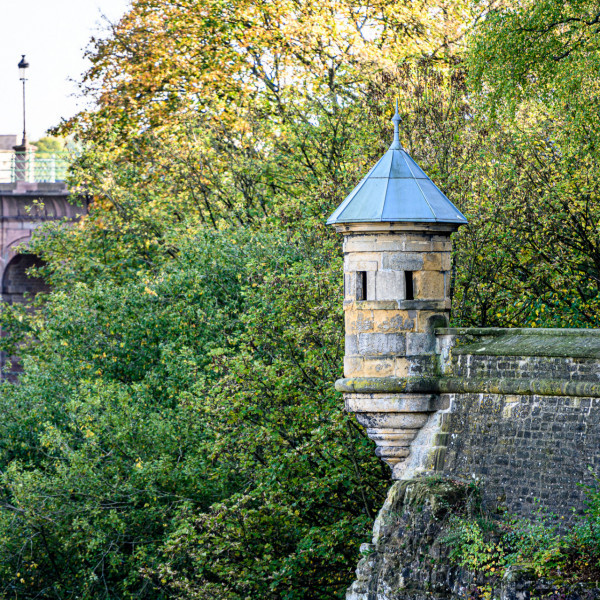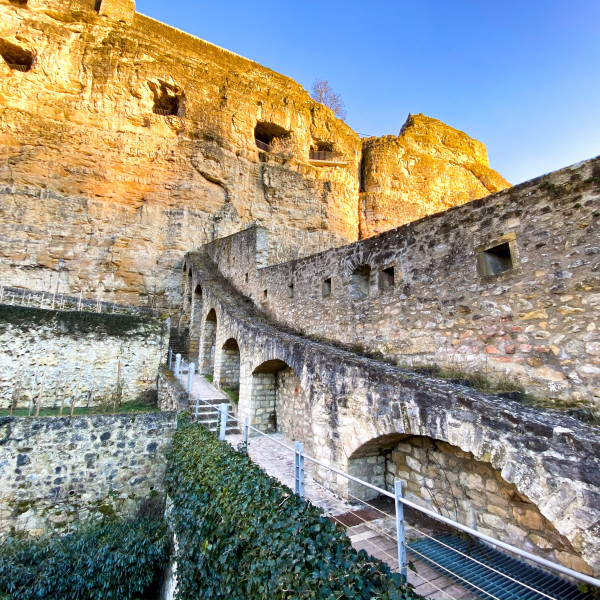
Dive into the depths of our heritage

About the Bock Casemates
In 963, Count Sigfried built a castle on the Bock Promontory, the foundation stone of the later city of Luxembourg. In the middle of the 18th century, the Austrians began to build the Bock Casemates. These impressive defences give a better understanding of the great fortress machinery that was the "Gibraltar of the North". The archaeological crypt, didactic antechamber of the casemates, is an additional highlight of the visit. No wonder that the fortress bulwarks and the old town, no less steeped in history, enjoy worldwide renown. In 1994, they were inscribed on the UNESCO World Heritage List.
Key facts

Click on the image to open the map
1745
Austrian engineers
1 100 m²
110 m de longueur – 7 m de largeur
Superb views through the loopholes
- Emperor Joseph II of Austria (1781)
- Napoleon I (1804)
- Prince Henry of the Netherlands (1868)
- Grand Duchess Charlotte (1936)
- Grand Duke Henri and Grand Duchess Maria Teresa (2000)
- A A The archaeological crypt, the didactic antechamber of the casemates, houses the cradle of Luxembourg. The archaeological excavations carried out in 1993 show the remains of the first count's castle, erected in the 10th century on the Bock promontory by the founder of the city, Count Sigefroi.
- B After visiting the archaeological crypt, you enter the keep of the former Luxembourg castle. A beautiful view of the valley and the lower town awaits you. Through the openings (now closed) in the upper vault, the cannons were passed to avoid the stairs.
- C The main gallery with its gun chambers and loopholes which were enlarged when the fortress was dismantled in 1867. The Bock's casemates could have housed some 50 cannons and 1,200 soldiers.
- D Walking through the former castle prison in the foundations of the belfry, you have a magnificent view of the Grand Duchess Charlotte Bridge, which connects the city centre with the Kirchberg plateau, and the remains of the Upper Grünewald fort to your right, and the Bock Rock and the Dent Creuse.
- E Here, the 47-metre-deep castle well plunges you into mythical Luxembourg: perhaps you will see the beautiful Mélusine greeting you with a mischievous wink and an elegant flutter of her fish tail...
- F During the eight-month siege of 1794-95, the Habsburg Field Marshal von Bender (1713-1798) occupied these spaces to protect himself against French attacks. Visit the bedroom, study and antechamber of this 82-year-old military genius who commanded the Austrian troops! Through the loopholes, you have a wonderful view of the Spanish city walls (1632), the upper town, the Grund suburb, the Cultural Encounter Centre Neumünster Abbey and St. John's Church (17th century), the Rham plateau and the former Vauban barracks (1685), the viaduct as well as the semicircular towers which are part of the remains of the third city wall encompassing the Wenzel cultural and nature trail.
- G Through the iron gate, you enter the Grund Battery, which had 4 loopholes for 8 cannons, firing alternately (3 shots per hour) to defend the lower town of Grund and to flank the ramparts of the Citadel. Nowadays called the Tun Deutsch Hall (1932-1977) in memory of the Luxembourg actor and director, the Grund Battery was once used as a platform for the performances of the famous Théâtre des Casemates.
- H Descending the winding staircase, you come to a passageway specially designed in case the Castle Bridge is destroyed. This subway, which runs under the street, is one of the 5 possibilities to cross the bridge, which is an interesting architectural feature of the fortress.
- I The Castle Bridge, built in 1735 by the Austrians, leads you out of the underground galleries to the Corniche Path, the most beautiful balcony in Europe, and the old town.
Legend of the beautiful Melusina
According to legend, Melusina was the wife of Sigfried, 1st count of Luxembourg, living in his castle on the rocky Bock promontory. On their marriage, Melusina required her husband never to see her during a particular day and night of the week. One fine day, unable to resist his curiosity, Sigfried spied her in her bath through the keyhole of her room’s door and discovered her fish’s tail. Melusina, noting that her husband was watching her, then vanished forever into the torrents of the Alzette river.
Admission
Access 7 days a week, every 15 min, from 09:45 a.m. to 5:00 p.m. (final admission)
Closed on 25 December and 1 January
Maximum duration:
45 Minutes
Time slot to be respected!
Entry not guaranteed beyond 15 minutes
Tickets are available here, at the Luxembourg City Tourist Office (Place Guillaume II) and at the entry of the Bock Casemates (Montée de Clausen).
For this activity*, the Kulturpass rate** (€1.50) is available. This offer is not valid online, tickets at this price can only be purchased on site at the Luxembourg City Tourist Office or at the entrance to the Bock Casemates.
*Only valid for single tickets, not for guided tours.
**Kulturpass - My access to culture for €1.50. For every resident on a low income.
General terms and conditions of sale
Practical Information
People with special needs are asked to contact the Luxembourg City Tourist Office on (+352) 22 28 09 before purchasing their ticket.
Montée de Clausen, Luxembourg
Show map

Watch the video!

Bock Casemates in pictures
Explore the depths of the city.
Les Casemates du Bock en 360°
Virtual visit
Our brochures
Download our brochures in different languages.
Other fortifications & Casemates











 Casemates du Bock NL
Casemates du Bock NL
 Casemates du Bock EN
Casemates du Bock EN
 Casemates du Bock SP
Casemates du Bock SP
 Casemates du Bock DE
Casemates du Bock DE
 Casemates du Bock IT
Casemates du Bock IT
 Casemates du Bock PT
Casemates du Bock PT
 Casemates du Bock FR
Casemates du Bock FR
